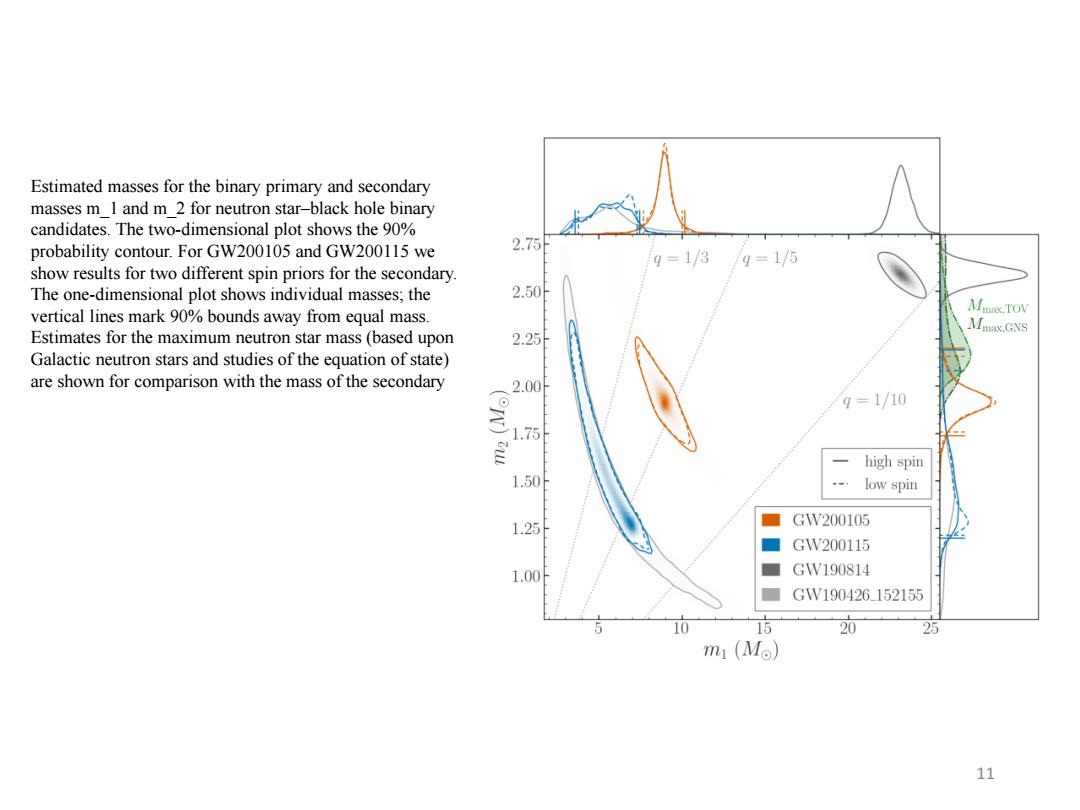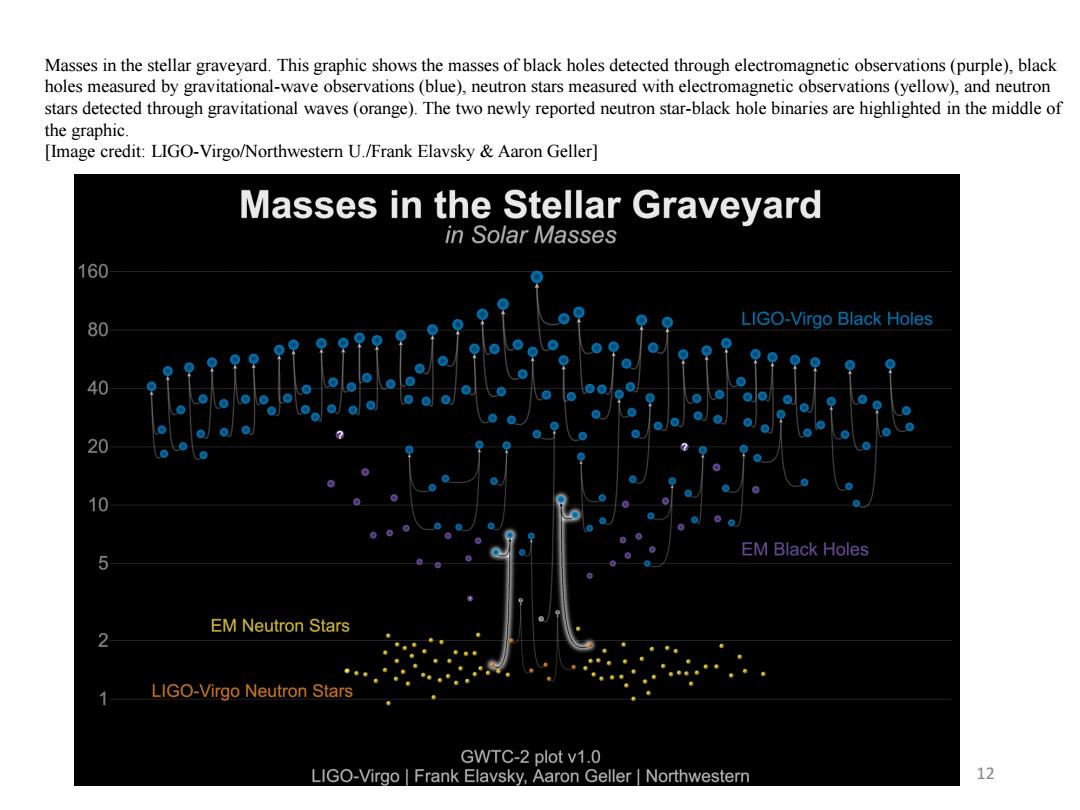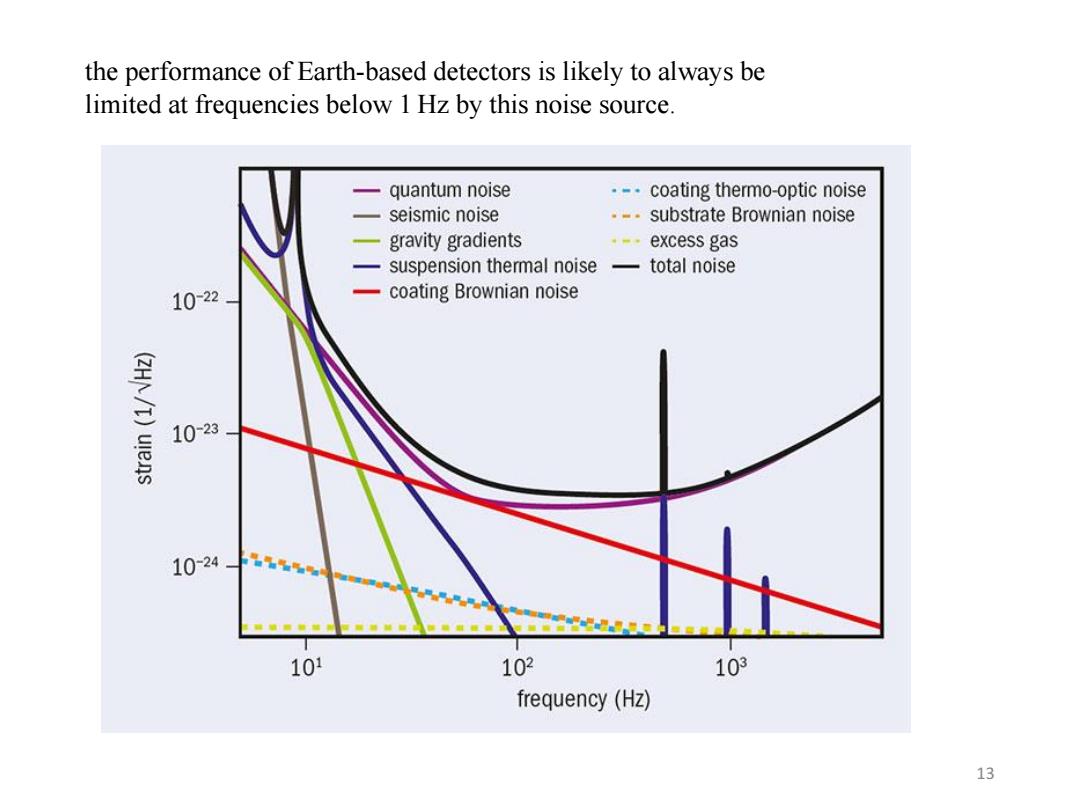
Estimated masses for the binary primary and secondary masses m I and m 2 for neutron star-black hole binary candidates.The two-dimensional plot shows the 90% probability contour.For GW200105 and GW200115 we 2.75 q=1/3g=1/5 show results for two different spin priors for the secondary. The one-dimensional plot shows individual masses;the 2.50 vertical lines mark 90%bounds away from equal mass. Mmx.TOV Estimates for the maximum neutron star mass (based upon 2.25 Mmax.GNS Galactic neutron stars and studies of the equation of state) are shown for comparison with the mass of the secondary 2.00 ≥ q=1/10 目 high spin 1.50 low spin 1.25 GW200105 GW200115 1.00 ■ GW190814 GW190426152155 10 15 20 25 m1(Mo】 11
11 Estimated masses for the binary primary and secondary masses m_1 and m_2 for neutron star–black hole binary candidates. The two-dimensional plot shows the 90% probability contour. For GW200105 and GW200115 we show results for two different spin priors for the secondary. The one-dimensional plot shows individual masses; the vertical lines mark 90% bounds away from equal mass. Estimates for the maximum neutron star mass (based upon Galactic neutron stars and studies of the equation of state) are shown for comparison with the mass of the secondary

Masses in the stellar graveyard.This graphic shows the masses of black holes detected through electromagnetic observations(purple),black holes measured by gravitational-wave observations(blue),neutron stars measured with electromagnetic observations (yellow),and neutron stars detected through gravitational waves(orange).The two newly reported neutron star-black hole binaries are highlighted in the middle of the graphic. [Image credit:LIGO-Virgo/Northwestern U./Frank Elavsky Aaron Geller] Masses in the Stellar Graveyard in Solar Masses 160 80 LIGO-Virgo Black Holes 40 20 10 EM Black Holes 5 EM Neutron Stars 2 LIGO-Virgo Neutron Stars GWTC-2 plot v1.0 LIGO-Virgo Frank Elavsky,Aaron Geller Northwestern 12
12 Masses in the stellar graveyard. This graphic shows the masses of black holes detected through electromagnetic observations (purple), black holes measured by gravitational-wave observations (blue), neutron stars measured with electromagnetic observations (yellow), and neutron stars detected through gravitational waves (orange). The two newly reported neutron star-black hole binaries are highlighted in the middle of the graphic. [Image credit: LIGO-Virgo/Northwestern U./Frank Elavsky & Aaron Geller]

the performance of Earth-based detectors is likely to always be limited at frequencies below 1 Hz by this noise source. quantum noise ·-·coating thermo-optic noise -seismic noise 。。 substrate Brownian noise 一 gravity gradients excess gas suspension thermal noise total noise 1022 二030 (ZHA/I)ulens 10-23 10-24 101 102 103 frequency(Hz) 13
13 the performance of Earth-based detectors is likely to always be limited at frequencies below 1 Hz by this noise source